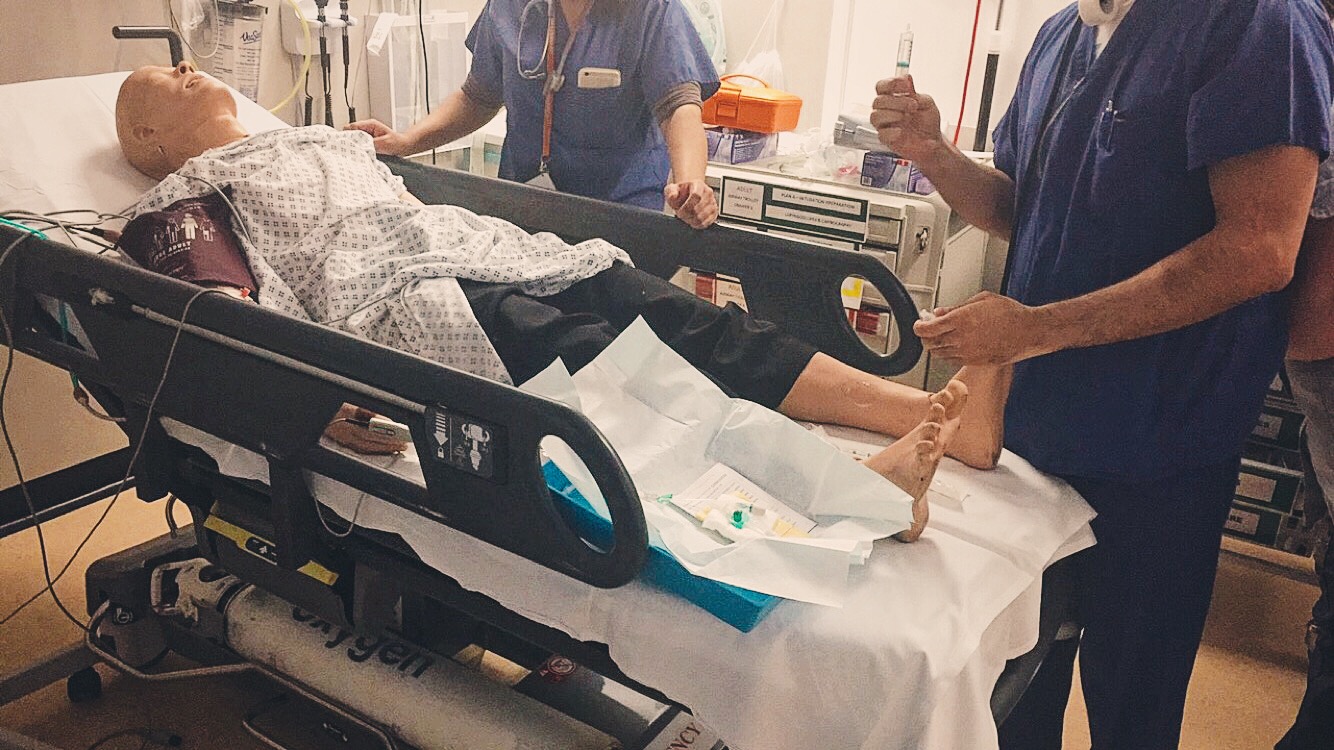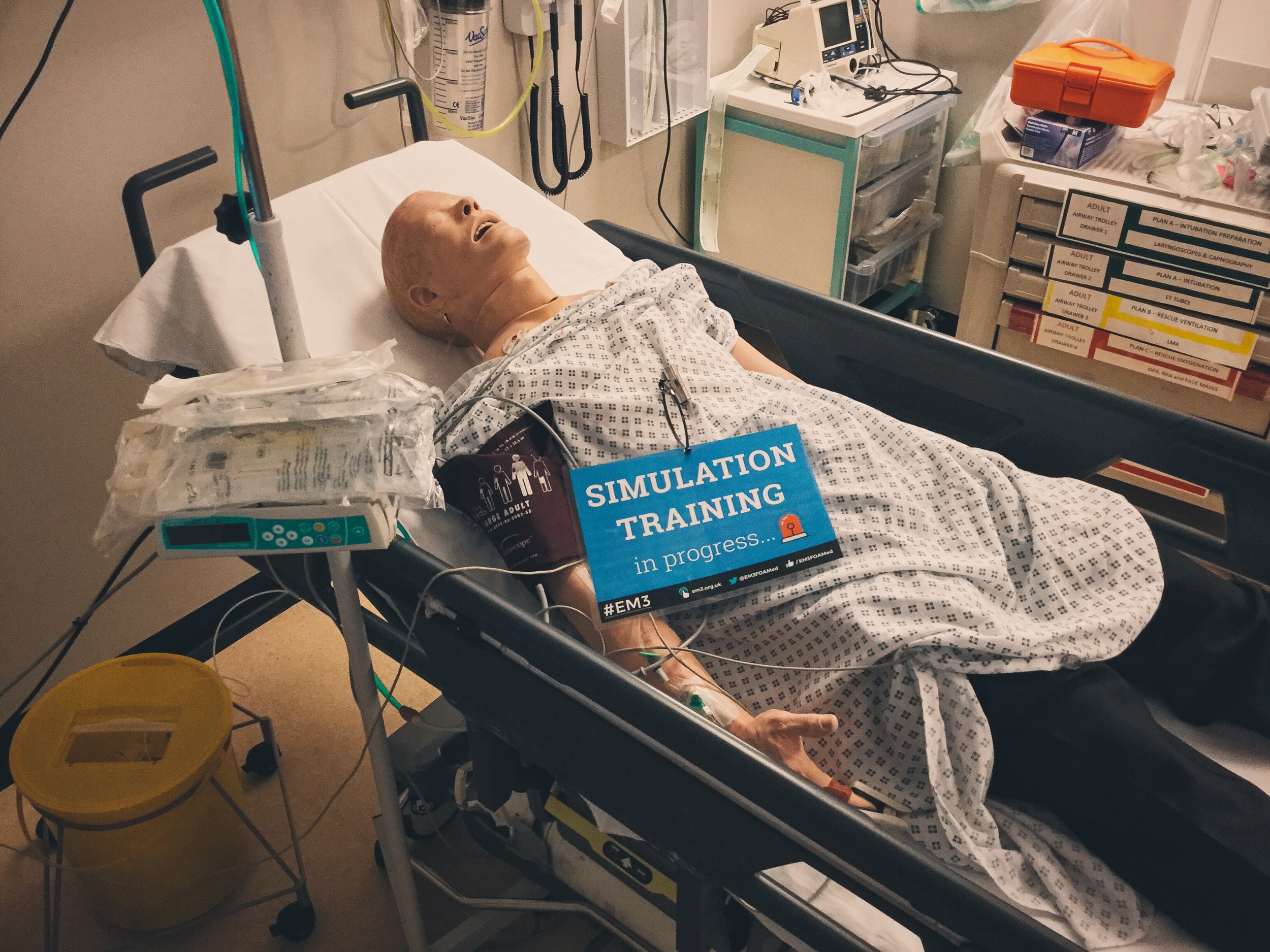#SimBlog: Diabetic Ketoacidosis
““21-year-old male with abdominal pain and vomiting for 48 hours.””
Observations
A – Patent
B – Bilat air ent, RR 22
C – HR 130, BP 96/52
D – GCS 15
E – Looks dry
Clinical findings
BM 26
Ketones raised
Smells of pear drops
Why we simulated?
DKA is a common presentation to the ED and can lead to severe consequences. We often forget that mortality rates have fallen significantly in the last 20 years from 7.96% to 0.67% [1]. Improved understanding and treatment has been key to this, but we must remember the potential harm that failing to manage these patients correctly can have.
I wonder how many of us have been discussing a patient with DKA and been told they "just need more fluid"? It is true that patients with DKA can have significant fluid deficit and for an adult this is typically 100ml/kg. However we must be mindful of the risk of cerebral oedema, especially in adolescents.
The role of the Emergency Department team must be to identify those with DKA and to start treatment – your department will likely have its own guideline however the Joint British Diabetes Society's guideline is also worth looking at. We must also assess our patients for presence of severe features and escalate their care appropriately.
Assessment of Severity[1]
The presence of one or more of the following may indicate severe DKA.- Blood ketones over 6mmol/L
- Bicarbonate level below 5mmol/L
- Venous/arterial pH below 7.0
- Hypokalaemia on admission (under 3.5mmol/L)
- GCS less than 12 or abnormal AVPU scale
- Oxygen saturation below 92% on air (assuming normal baseline respiratory function)
- Systolic BP below 90mmHg
- Pulse over 100 or below 60bpm
- Anion gap above 16 [ Anion Gap = (Na+ + K+) – (Cl- + HCO3-) ]
- Blood glucose > 11.0mmol/L or known diabetes mellitus
- Ketonaemia > 3.0mmol/L or significant ketonuria (more than 2+ on standard urine sticks)
- Bicarbonate (HCO3-) < 15.0mmol/L and/or venous pH < 7.3
References:
- Joint British Diabetes Societies Inpatient Care Group – DKA in Adults
Learning outcomes
Assigning a team leader and stepping back from the patient allows an overview.
Re-assessment and verbalising to the team can help formulate a plan.
The DKA prescription chart lists the severe features of DKA.
Positive feedback
Asked for and used the pro forma/DKA chart.
Instigated an appropriate fluid challenge.
Considered the possibility of an underlying cause.










